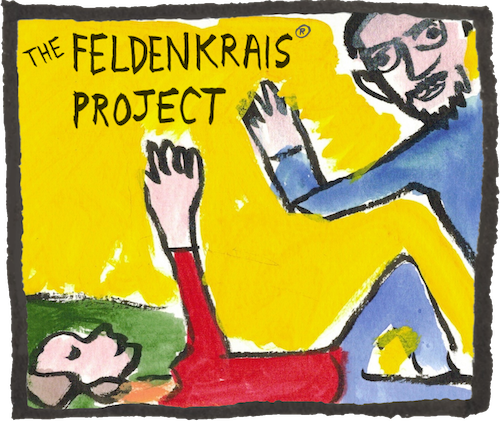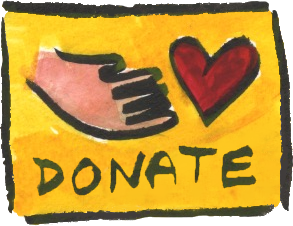Perfecting the Self-Image (Patrons)
Seated, back-lying, and eventually transitioning between, all while holding one foot in two hands. This lesson clarifies how our attention and sensory motor imagination can be consciously harnessed to improve our self-image, options, and behavior, since – as Feldenkrais writes – "We act in accordance with our self-image."
We offer over 50 free lessons, but this one's just for our Patron-level donors. You can learn about it in the free lesson notes and comments below, but to access the audio you’ll need to join The FP as a Patron. Learn more
Got a question for Nick, or a thought about this lesson?
Use the comments section below! Public comments build our community and help search engines find us.




The audio player above is how I recommend you explore this lesson. It’s been edited for flow and clarity, and the lesson notes may be helpful.
Patrons can also view a longer introduction to this lesson and some fascinating after-lesson discussion here in the unedited Zoom recording, including more quotes straight from Moshe Feldenkrais, and some amazing responses from surprised students.
One public comment was already left on that page. I want to highlight an excerpt here because it’s so valuable for learning:
If you’ve got a response to this lesson or a question about it, please comment below.
Wow, this was quite a transformative lesson! I’ll revisit this and see what’ll happen. Thank you!
It’s transformative for me, too! This one always surprises me. I don’t think of myself as particularly flexible and I used to be intimidated by this genre of lesson, but it never fails to surprise me how much I improve, and how wide-ranging the noticeable improvements are throughout me – no matter how limited I feel at the beginning!
Often I find the more physical of Moshe’s lessons very challenging.I’ve always been able to roll to sit in this configuration but felt ill at ease with the constraints. Today I see how much the constraints contribute to my understanding of myself. Next time I’ll see how much I can do without effort. I might be on my way to getting this very strange roll to sit in a Feldenkrais way.
This lesson was a bit of a strange experience for me. I was expecting a big physical challenge based on the information and previous comments, but found it very easy to do. I’ve learned recently that I’m quite hypermobile and that this contributes to a lot of the health issues I’ve been experiencing. At some point something is said like “laugh with the thought of being able to put your foot on your head”, which surprisingly triggered a lot of feelings of insecurity. I can very easily put my foot on the crown of my head, and can easily do the whole sequence of rolling and bending to seated, and it made me feel abnormal or like I was supposed to experience something I wasn’t experiencing, like I was somehow doing it wrong because it came so easily. Before getting ill I would’ve seen my flexibility as a cool trick and would’ve just thought “ha, easy peasy lesson” but now it has gotten a very different meaning. So for me I think this lesson was a lot more about the sensations in the emotional landscape. I had to ruminate a bit over it in bed overnight.
Funny thing. Only after posting my comment I glanced upon the title of the lesson, which now suddenly seems very apt in a different way
Thanks for sharing your experience with this lesson. I hope others in similar situations see your comment – I think it will be helpful and reassuring. I regret that my language led to emotional strain for you. My goal is always to cast the widest possible net of inclusion; I hadn’t thought about how it might feel to someone who is hypermobile. Sorry about that. I will consider this carefully in the future.
You may have discovered this already, but for others (and in case it’s helpful): my training and experience in working with extremely flexible folks is that it’s very useful to focus on precise, clear lines of skeletal transmission of force in movement, and on taking ground reaction forces up into the skeleton clearly. Because hypermobile folks have more options than the average person for how their bones interact with each other, there’s often more awareness and subtlety required to learn to sense ideal lines of force. Grounding for Liftoff may be a good study resource.
Thanks for your reply. It most certainly wasn’t your language that made me feel this way (and even if it had been, I’m a lover of language and its uses and can’t really stand the current “don’t trigger me” climate), so I hope my wording didn’t come across as accusing. It was purely an internal process within myself that caught me by surprise. I’ll definitely do the grounding for liftoff deep dive, as well as the balance one. They were next on my list after the ATM book series, but i might just change the plan and do those first 😉
Just to add one last thing ;). I very much enjoy the language used in all of these lessons, including the conceptual descriptions. If anything, I consider it a good thing if language, expressed with good intentions, can trigger emotions (the value of so called “negative” emotions not necessarily being any less than that of positive ones)
Thanks. You are channeling my meditation teacher. One day I will fully absorb this wisdom! 😉
This lesson was quite physically challenging for me especially at first. I find sitting on the floor and holding my foot incredibly uncomfortable. I took the usual advice of trying to make it as comfortable as possible and propped myself up against the bed for back support. Then to hold my foot while lying on my back–goodness, I can barely reach my foot and it strains my arms. This felt like way more effort than most lessons and I kept trying to figure out how I could make it more comfortable. Not sure how to do this one without effort! I got to the rolling part and it was like I hit a hard stop. I’m laying there on the floor rolled to one side holding my foot in my hand and I don’t think I will be able to move. I tried to use some momentum and it didn’t work. I felt like a helpless beetle on my back! Just stopped. I wondered how this was even possible and could I do it. I ended up watching the zoom version and another video to find out what was supposed to be happening. The verbal descriptions were not completely clear. When I saw the transition from laying to sitting this just looked like a miracle to me. How in the everliving *#*! was that supposed to happen??
I switched to the other side just to try and it happened fluidly! WHAT!? My body just knew what to do. So weird. So then I went back to the right and tried it, knowing it had happened on the left, and although not smooth at first I actually did it. WOW! Then I was able to do it after that. The visualization for the left was really cool because then that side came easily. What a surprise.
What I noticed was my tendency to push through and effort to do things–which has definitely happened in life. I was determined to make myself do it but couldn’t, which was a blow to my ego. “I SHOULD be able to do this” type of thinking. I also noticed my defense mechanism of confusion kicking in–that’s when I went to the videos. Once I got out of my head by just switching to the side that hadn’t had any practice in failing, it seemed to come easily. I got out of my own way.